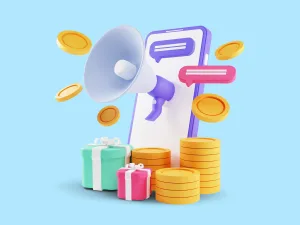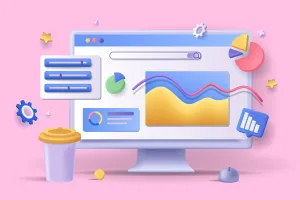With an average return on investment of €36 for every pound spent (according to email marketing expert Litmus), email marketing remains one of the most profitable tools for brands. It targets a qualified, active audience with personalised offers and maintains a lasting relationship.
In a context where marketing pressure is intensifying, capturing attention is a challenge. Integrating a competition mechanism into an email campaign boosts interaction, strengthens engagement and creates an experience.
We explain the benefits of email competitions and how to exploit their marketing potential.
Why is gaming a powerful engagement tool in an email competition campaign?
In a highly competitive environment, the key to successful email marketing lies in the ability to capture attention. Incorporating game mechanics allows you to introduce a promise right from the subject line, boosting open rates. A Litmus study reveals that subject lines containing an offer or benefit increase open rates by 50%.
The game acts as a powerful click driver. Via a link that redirects to a landing page, it transforms communication into a participatory experience. The user interacts, which extends the time spent with the brand and increases the click-through rate.
Another advantage is that the game becomes a lever for activation. Depending on the participant’s results (winnings, score, quiz answers, etc.), it is possible to create redirects to product sheets, targeted offers or editorial content. The journey is enriched, fluid and aligned with the contact’s expectations.
Finally, with email competitions, campaigns become more viral (sharing on social media, referrals). They enable data to be qualified for CRM actions.

5 competition ideas to boost your email marketing competition
Introducing game mechanics into an email campaign can transform a channel into an interactive experience. However, it is important to choose the right mechanics for the right objective: generating traffic, reactivating a dormant audience, enriching customer knowledge, etc. Here are five effective formats that are easy to integrate into an email strategy.
1. A winning calendar to engage your audience over time
Inspired by the Advent calendar, this format offers a game every day or with every email sent. It works well during busy periods (Christmas, Black Friday, back to school). It creates a regular event for subscribers.
In a competition email strategy, the Winning Calendar maximises the open rate across several consecutive mailings by playing on surprise and the promise of a reward. For this to work, it is essential to tease the concept in the first email and maintain a clear frequency (daily or weekly). A link to the landing page of the day, a simple mechanism (quiz, instant win, prize draw) and a prize are key to maintaining interest.
2. A Wheel of Fortune to boost conversions during sales
The Wheel of Fortune creates a sense of urgency and encourages action. This mechanic is suitable for campaigns with commercial objectives.
The Wheel of Fortune captures interest as soon as the message opens. By redirecting to a landing page or integrating a dynamic preview, the wheel encourages clicks and conversions.
To maximise impact, it is recommended to offer immediate benefits (discounts, free delivery, limited edition products). The promotion should be spread out over the sales period to maintain engagement.
3. A puzzle to boost the launch of a new product
Interactive puzzles spark curiosity and encourage users to discover new products. In email marketing, this fun format creates engagement by inviting users to reconstruct an image or unlock clues related to the product.
This type of game is rolled out in several stages (one email = one piece of the puzzle) to maintain interest and encourage people to open the messages. Once the puzzle is complete, a reward is offered: a preview, a discount or content. For maximum impact, use a clear, mobile-friendly design.
3 best practices for maximising email marketing conversion with gamification
Integrating gamification into an email campaign can increase conversion rates, provided that a few basic rules are followed.
1. Adapt the format and gameplay to email marketing
An effective game starts with an experience tailored to the medium. The format must be responsive, quick to understand and connected to the promise of the email. Adding engaging storytelling and elements of suspense enhances immersion.
To stimulate interaction and retain attention (for a sequence of several emails), the brand can incorporate random mechanisms (prize draws) or personalised scenarios for each user (based on their actions/choices in a quiz).
2. Integrate visible feedback
Feedback plays a key role in motivation. A progress indicator, immediate reward or animation following a click provides users with benchmarks.
These feedback loops (mechanisms that send a response to the user in response to their actions, allowing them to adjust their behaviour) increase engagement and encourage users to continue the experience. They improve click-through and conversion rates for email campaigns.
3. Add a social dimension to the experience
Social elements (sharing, ranking, comparing scores) transform the experience into a collective dynamic. Highlighting performance (‘Better than 80% of participants’) or encouraging sharing on social media extends the campaign’s reach by strengthening engagement through a form of extrinsic motivation. This helps create a sense of community around the brand.
When used correctly, gamification transforms email marketing into a highly engaging tool capable of increasing open rates, clicks and customer loyalty. With Socialshaker’s solutions, you can integrate high-potential competitions into your marketing emails. Don’t hesitate to use these formats to captivate your contact base, enrich your CRM and boost your relationship strategy.





